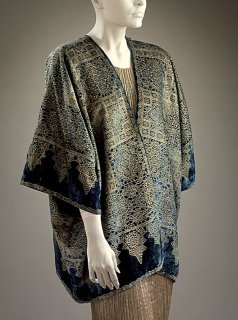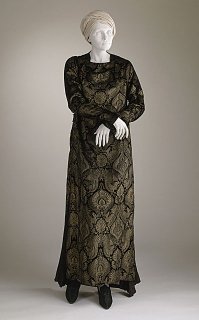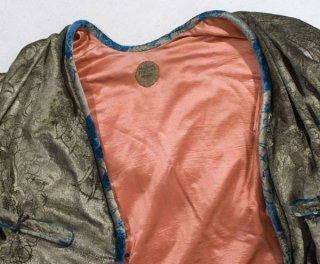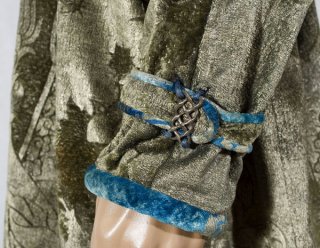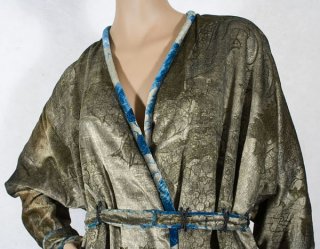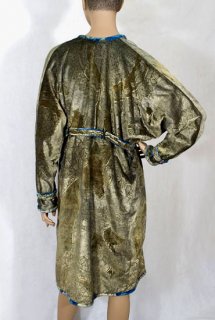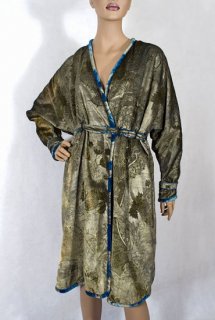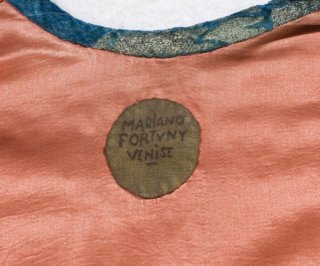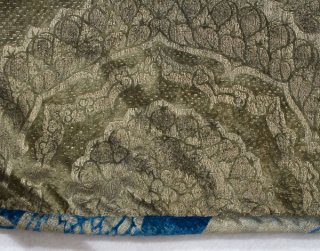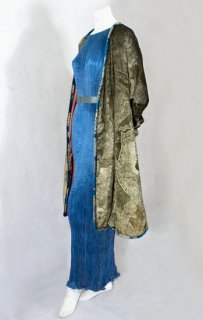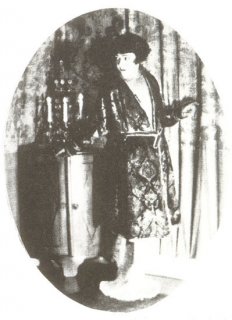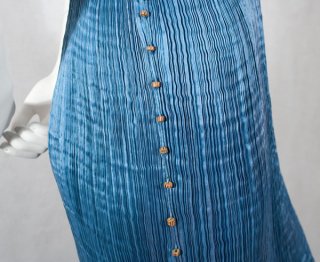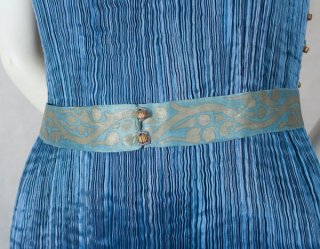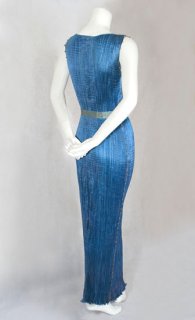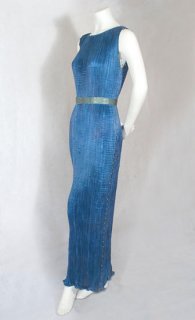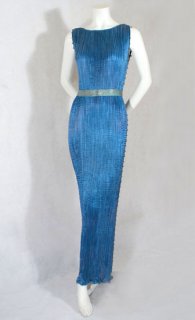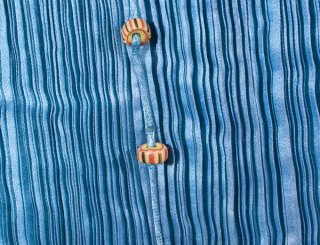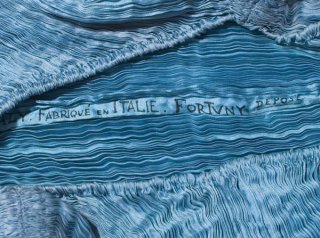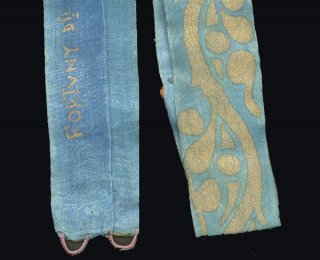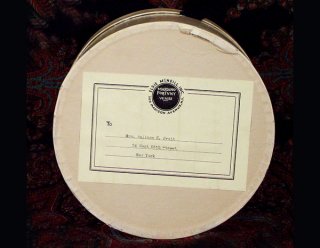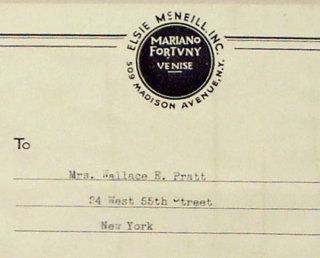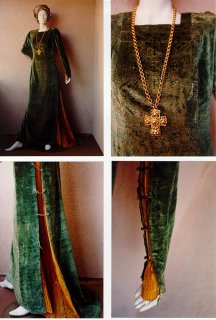Fortuny stenciled velvet coat, early 1920s
Fortuny treated velvets with a special technique of multilayered dyeing, which sends the base color floating up mysteriously through the pile to catch the light in a different ways, depending on the angle of view.
The colors in this sublime three-quarter-length coat change from silver to bronze, reflecting the many layers of hand mixed pigment. The edges are bound with padded, stenciled blue velvet. The coat is lined with rose/peach satin.
Fortuny's virtuosity with textiles had most free rein with the loosely structured garments worn over the Delphos gown. These garments were often made of velvet, which he called "the aristocrat of stuffs," a term used by the Renaissance world that inspired him. His large collection of antique textiles included many Renaissance velvets, which he studied closely, reproducing even their aged patina.
This peerless velvet coat was originally meant to be worn over a Fortuny Delphos tea gown, but the jacket can be equally dramatic over pants and a sweater. The illustration, from a 1923 issue of Vogue, shows a similar Fortuny coat.

